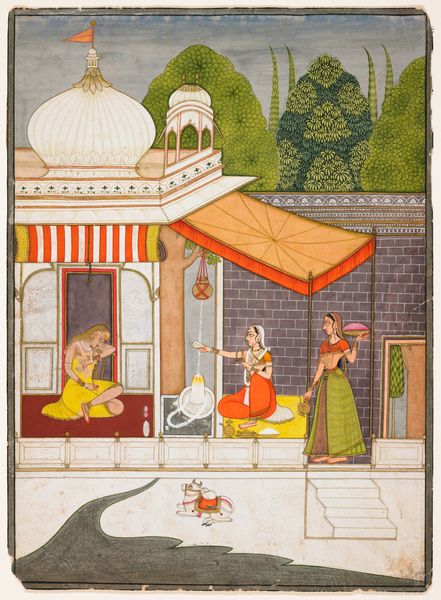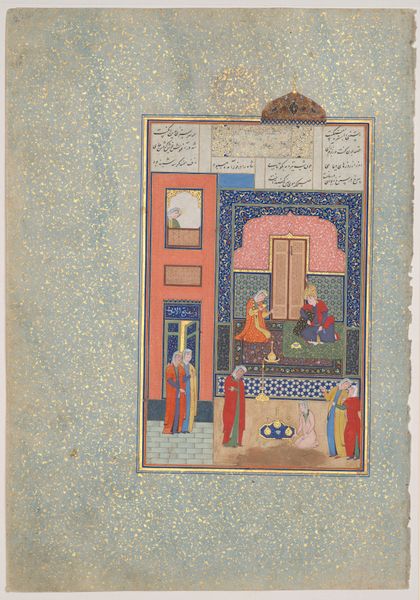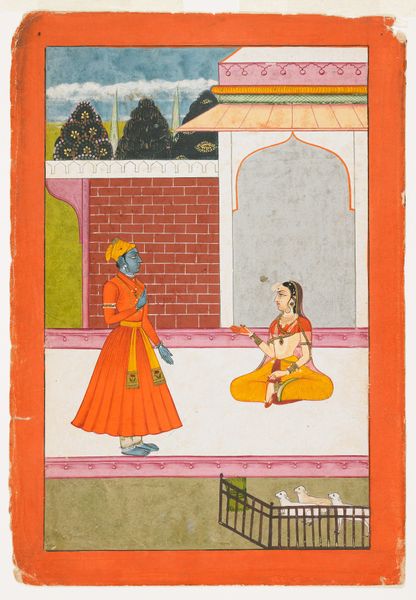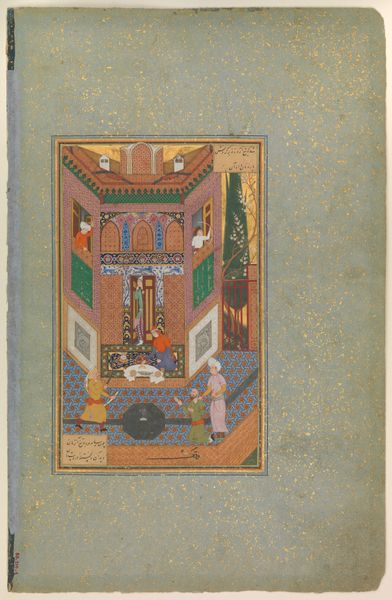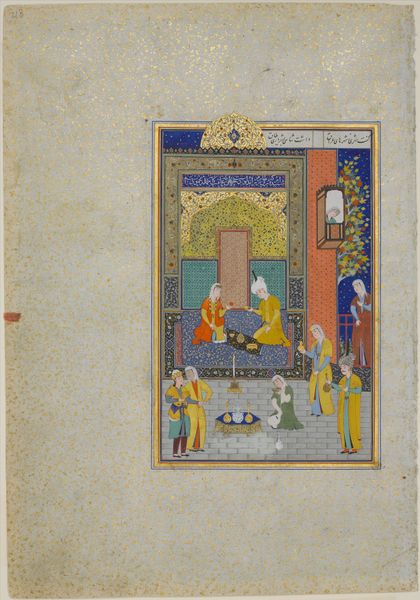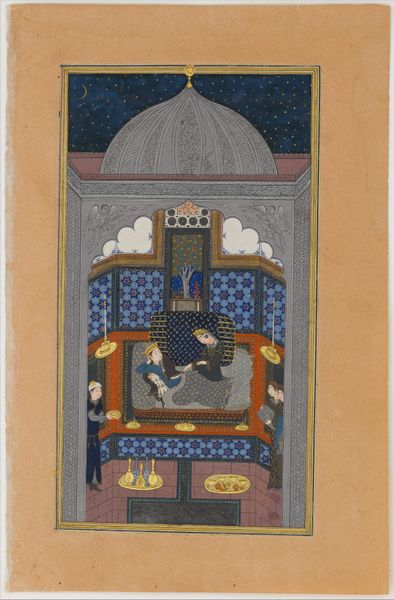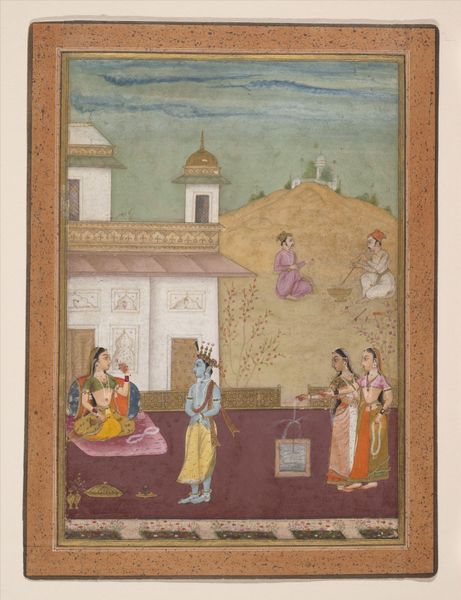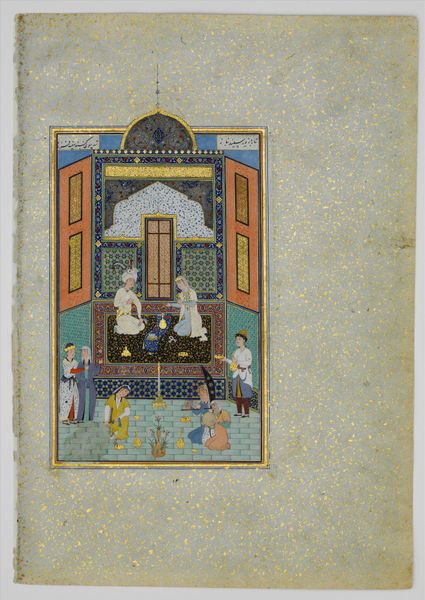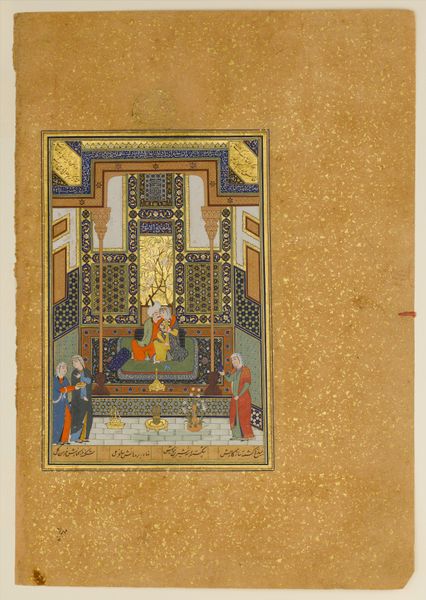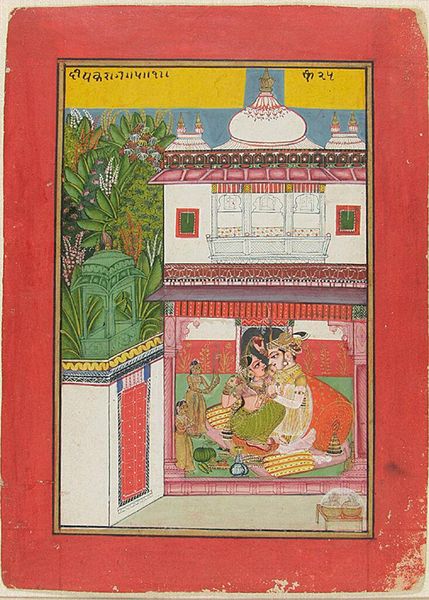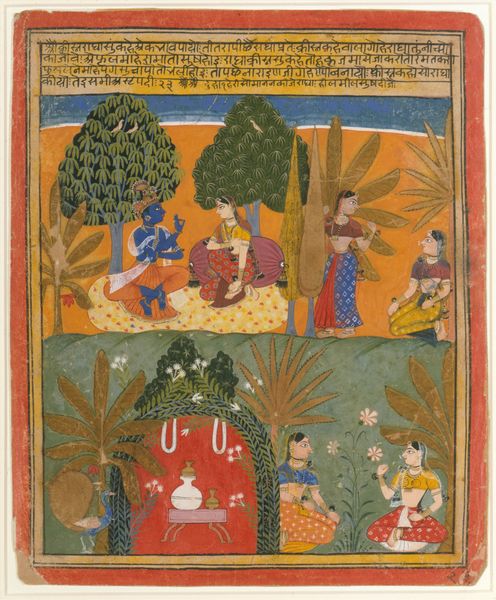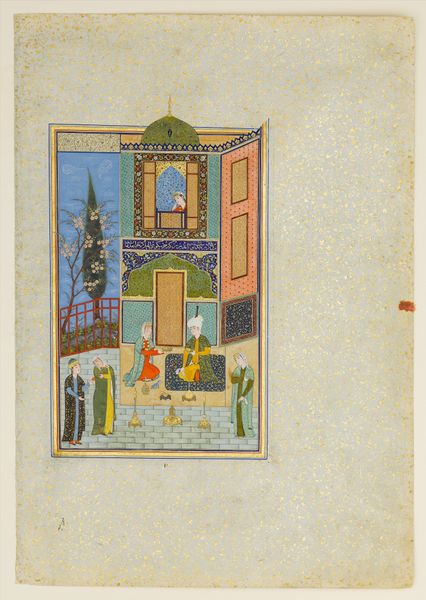
painting, watercolor
#
water colours
#
narrative-art
#
painting
#
asian-art
#
figuration
#
watercolor
#
geometric
#
watercolour illustration
#
miniature
Dimensions: 9 1/4 x 7 1/2 in. (23.5 x 19.05 cm)
Copyright: Public Domain
Editor: This is a Mughal painting, an illustration to the Rasikapriya of Keshav Das, made around 1700. I find the compartmentalized composition really interesting. What stories do you see being told here? Curator: I see a layered narrative, a space ripe for exploring gender dynamics and courtly love. The Rasikapriya, as a text, explores the different types of heroines and heroes in love. Consider how these figures are placed within domestic spaces. Who occupies what space? What power dynamics do you see enacted through this spatial arrangement? Editor: Well, one woman is standing, almost presented, while the other sits elevated with a man. Curator: Exactly. Think about how this image functions within a specific social and political context. The Mughal court, while opulent, was also deeply structured by gender and status. How might this painting both reflect and potentially subvert those hierarchies? Notice the gestures, the clothing, the architecture. They all contribute to a reading of power, desire, and perhaps even resistance. Editor: Resistance? How so? Curator: Well, the Rasikapriya itself can be interpreted as a text that empowers women by exploring their desires and complexities. This illustration may offer glimpses of female agency, even within the confines of the court. Whose gaze is prioritized here, do you think? Whose story is truly being told? Editor: I see your point. It's not just a snapshot of courtly life, but a potential commentary on it. It’s really more complex than I initially thought. Curator: Precisely! And that complexity invites us to engage critically with the past and question the stories we tell ourselves about art, gender, and power.
Comments
minneapolisinstituteofart almost 2 years ago
⋮
The fiercely independent rulers of the state of Mewar withstood the military onslaughts of the Mughals until 1615. Though conquered by the Muslims, they were allowed considerable political and cultural autonomy. During the seventeenth century, an innovative painting style evolved at the capital city of Udaipur that was barely influenced by Mughal court taste. Rajput literary and musical themes, like the ragamalas, the Gita Govinda, and Bhagavata Purana, dominated early Mewar painting. In this scene, a woman converses with her beloved in a pavilion topped with domed kiosks. In the bedchamber to the left, an attendant awaits the couple with a fly whisk over her shoulder. In such a configuration, the figures most likely represent the Vairari Ragini, a female musical mode from a ragamala series based on classical Indian melodies.
Join the conversation
Join millions of artists and users on Artera today and experience the ultimate creative platform.
